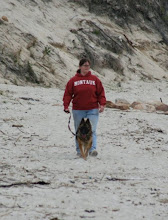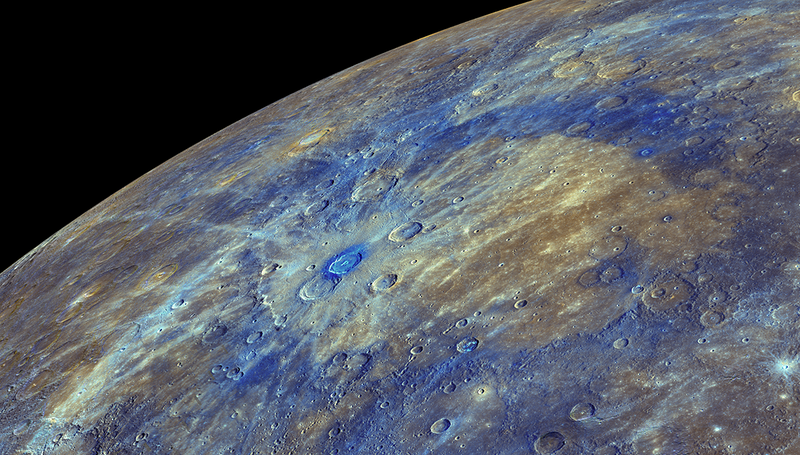To start the show they treated us to two pieces of music rather than jumping straight into playing Holst. The first was Music of the Spheres by Josef Strauss. This piece was originally composed in 1868 for the Medical Association Ball in Vienna. This was another piece that I wasn't familiar with but at least this time I knew the name. As you can imagine being composed for a ball it is meant to be danced to and it actually demands being danced to. For example I am listening to it now on Spotify and I was just dancing in my kitchen while getting my dog water especially around the 2:20 mark. If you don't start dancing, at least a harmless sway or something, I would be shocked. I definitely feel like this piece is taking me on a grand trip. At times the music sounds epic in proportion and than at times the melody takes over and becomes more small scale and personal in my mind.
Next was Philip Glass's Violin Concerto No 1. This one had a haunting melody that continued through the different movements and at times the solo violinist and the orchestra seemed to be interacting with each other as if having a conversation. It made me want to look up more of Glass's work. I definitely felt like the piece was telling a story and I think the conversation between the different instruments helped convey that as well. Also the soloist, Jun Iwasaki, was phenomenal to listen to and to watch as he played.
Following these two pieces was a brief intermission during which we stepped outside to enjoy the fact that it is January and the temperatures were in the mid 60s. Also we got to see a beautiful view of the At&T building A.K.A. Batman building.
Once everyone was seated again the Symphony began to play and now the large screen began to show images and videos.
The first movement was "Mars, the Bringer of War". There is a constant repetition of three notes that makes the piece feel like a march. The images that made me smile the most was a recreation of Curiosity, the Mars Rover, reaching Mars, hatching, and beginning to explore. The video showed amazing actual footage taken from the Rover of the Martian landscape including the sand dunes and terrain.
The second movement is called "Venus, the Bringer of Peace." The musical piece certainly has a calming effect moving away from the three note repetition of Mars. This movement has slower more drawn out notes. Unlike Mars, which seems to be pushing at the listener this piece invites the listener in like a kind host. The image that really stuck with me from Venus were the multi-colored views from the Magellan mission showing the topography of Venus.
Without the topography Venus still looks like a beautiful planet and makes me think of a pearl because of the swirling pattern.
Next up was "Mercury, the Winged Messenger." This is the shortest piece in the set and is very light hearted and a little playful: basically what I expect from Mercury. As a result it didn't give much time for images of Mercury. The images focused on what I imagine are the result of impacts from comets against the surface.
After Mercury the rest of the musical pieces follow the order of the planets getting further from the sun. Holst skips Earth since it is from Earth that we perceive all the other planets. Also in a sad side note there is no movement for Pluto since Pluto had not been discovered yet. The composition was completed between 1916-1918 and Pluto was not discovered until 1930. I however was feeling super nerdy and instead of dressing up like some may do to go to the Symphony I wore my "Revolve in Peace" tee shirt with an image of Pluto on it and the years 1930-2006.
Next up was Jupiter, which was my favorite both musically and visually! At the half-minute mark or close to it woodwinds begin playing a real playful melody, which quickly got my attention. Then at 1:35 or so starts a progression where more and more instruments are introduced as the movement builds for about a minute until it reaches a climax and then slows and calms again. At around the 3-minute mark a very slow and majestic melody begins to play and again that melody builds over the next roughly 2 minutes before returning to the joyful and playful melody from the beginning.
Visually Jupiter was stunning. First off this picture made me laugh:
I don't know why, there is just something about poor tiny (not actually so tiny) Io against the massive background of Jupiter. Actually Io is not that different in size from Earth's moon and is larger than Mercury. I believe this photo was taken by the Galileo in 1999, fitting since the four largest moons of Jupiter (called the Galilean Moons) Io, Europa, Ganymede, and Callisto are among the earliest objects observed by Galileo around 1610.
Also the video created by the photos from the Cassini spacecraft in 2000 that showed the zonal winds of Jupiter, including Jupiter's red spot was engrossing. At one point at the melody was building with different instruments the screen repeated the same video but zoomed in and out further with each repetition.
This view shows a recreation as if looking at the the north pole of Jupiter with east and west winds appearing as rotating circles.
This is also a string of images put together to show a video of how the zonal winds move around Jupiter.
This video uses data from the Hubble Telescope to show the winds around Jupiter. I was mesmerized by the different speeds that the bands traveled. And by Jupiter's red spot, basically a very large hurricane that is constantly traveling around the planet.
"Saturn, the Bringer of Old Age" followed Jupiter. Musically Holst returns to long drawn out notes that seem stately. I imagine an old and wise Saturn giving advice. I imagine the music telling stories and in the fourth and fifth minutes there is a building crescendo that ends with clanging bells which to me feels like a warning, like Saturn is watching mistakes of his past be remade and trying to stop them. The very end has a wistful tune intermixed with bells that makes me think of Saturn as reminiscing as the bells begin tolling for him, looking back on his life maybe sensing an ending soon. While the screen showed amazing images of Saturn my favorite is still something kind of close to this:
This is basically what Meg and I saw through our telescope last year. It was small and grainy but the rings where beautiful and clearly visible.
Next is "Uranus, the Magician" which immediately makes me think of spell casting and mischief. The beginning is a little startling coming from the calm end of Saturn. There is strong introduction by the wind instruments and then a drum beat signals silence before a note pattern begins to repeat getting louder with each repeat like witches over a cauldron. The melody is at times playful but with a dark and mysterious undercurrent.
In the images we got to see the beautiful blue coloring of Uranus revealed in 1986 when Voyager 2 passed by the planet. Interesting note about Voyager 1 and 2 they both contain a record on them with a message in case they are ever found by intelligent life. So if they are ever found by alien life then hopefully while developing space travel they also built a phonograph.
The last piece is "Neptune, the Mystic."
This image taken by Voyager shows Neptune's blue spot which is a storm that rotates counter clockwise.
Musically this is another one that through building repetition I feel like it pulls in the audience. Looking at the beautiful deep blue of Neptune also, I think, has a mesmerizing quality to it. What struck me most was at the last two minutes when a chorus joins the instruments. Holst request that the chorus be unseen and I kind of wish that I hadn't read the program which mentioned the chorus. I feel like it would have been a real shock to all of a sudden hear disembodied voices chanting as the planet and the melody work together to create a feeling of other-worldliness.
It really did feel like a Space Odyssey. The images, videos, and music brought the audience on a journey across the universe starting with Earth's direct neighbors and then traveling away from the Sun in order getting further and further from Earth.
Speaking of the Sun we are now 211 days away from the Solar Eclipse on August 21st. Another spectacular celestial event to look forward to!










No comments:
Post a Comment